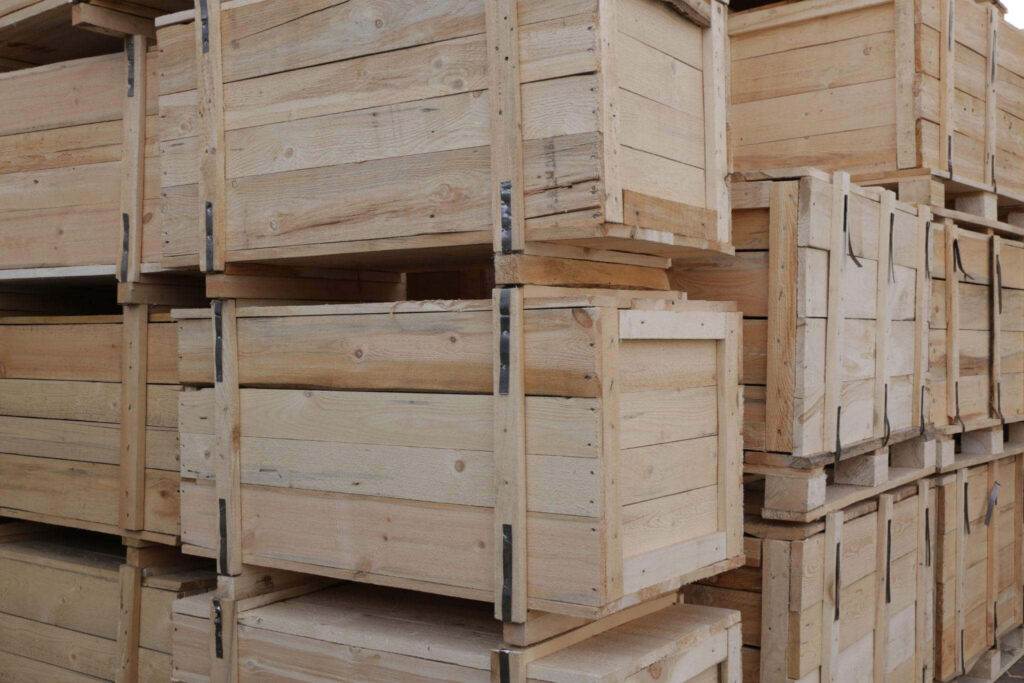Waterproof Wooden Shipping Crates
Timber consumption in the packaging industry may not be comparable to other industries, such as construction, manufacturing, and printing. Nevertheless, timber is still used in everything from cardboard boxes (cardboard is paper-based) to heavy-duty cases and crates. Even with other materials like plastics, timber won’t be going away anytime soon.
However, as an industry that creates products that literally go places, packaging providers often get asked about how wooden shipping crates hold up when they’re exposed to water or moisture. Anyone who has built stuff with timber knows that wood and water don’t get along well unless pre-treated, but even that isn’t a guarantee.
In this post, we aim to explain to what extent wooden shipping crates Melbourne business owners prefer can withstand water or moisture. We’ll also provide tips on how to preserve these crates in wet or humid environments.
From Wood to Crate
You might think that wood has at least some water resistance, seeing that trees get rained on all the time in the wild. However, processed timber is already deprived of the things that handle water and moisture as a tree – namely the bark, roots and leaves.
We won’t go too deep into a tree’s water uptake and transport mechanism (that’s beyond this post’s scope). The gist is that it gets its water from the soil via its roots, while its leaves absorb water vapour in the air. Meanwhile, the tree’s bark ensures the only way to absorb water is through the roots or leaves and not through the wood itself.
When the freshly-cut log reaches the mill, it’s stripped of its bark and cut into planks and other shapes. After which, they undergo heat treatment to remove any moisture left that can warp or crack the wood when left alone.
In the case of timber packaging products, ISPM-15 guidelines require the timber to be heat-treated with a minimum temperature of 56oC (133oF) for 30 minutes non-stop. The result is wood that not only won’t warp or crack but also won’t become a nesting ground for insects that can invade other ecosystems within or outside its country of origin.
Note that heat treatment isn’t the same as kiln drying. The former involves full sterilisation of the wood at higher temperatures to prevent insects and other organisms from feeding on it, while the latter only involves drying the wood but at lower temperatures. A heat-treated timber crate sports an ISPM-15-certified stamp.
Water-Resistant Doesn’t Mean Waterproof
Heat treatment reduces timber’s hygroscopicity or ability to absorb water and moisture around it, which means heat-treated timber crates can be water-resistant. However, it’s worth noting that ‘water-resistant’ isn’t the same as ‘waterproof.’

Timber packaging supplies are rarely finished, unlike timber products in other applications (unless specified by the customer). Without this protective layer, the crates’ moisture and water resistance is only a part of that of others, like trusses or fencing pickets. Wooden boxes that can’t be stored indoors usually require other means of protection.
Worse, even heat-treated timber can be prone to other causes of rapid deterioration, such as salty air and intense ultraviolet (UV) rays. The more frequent timber crates are exposed to these conditions, the higher the risk of cracking and moisture entering these cracks. The salt crystals can then tear the wood fibres from the inside.
This can be an issue when timber crates have to be shipped by sea or are stored in a facility without adequate climate control. The deterioration process may be slow, but if a business plans on reusing the crates for the foreseeable future, they might not last long enough to serve as a cost-effective packaging solution.
In short, wooden box shipping crates can resist water and moisture but aren’t immune to them. Without proper care during storage and transit, the crates will be at risk of slow but steady deterioration. The same goes for other timber packaging supplies like cases and pallets.
Handling Crates in Humid Environments
However, this doesn’t make wooden crates a terrible packaging choice. What they lack in waterproofing, they make up for in affordability and ability to carry immense loads, such as entire machines and their components, among other things. On top of that, there are some measures you can take to preserve the wood crates’ integrity under wet or humid conditions.

Store in a climate-controlled environment
This tip has been mentioned a few times so far, but it’s a surefire way. A climate-controlled environment allows for manual regulation of humidity, temperature and indoor air quality in a storage or delivery space. It can protect the wooden crates as much as their contents.
If you own a climate-controlled space, make sure there aren’t any sources of moisture inside, such as leaky plumbing. Deal with such problems as soon as possible, lest risk dealing with more than just the moisture.
Use moisture-resistant lining and desiccants
External measures alone can only protect your crates and the goods inside so much. For added protection, consider placing anti-moisture lining and desiccants inside the crate. These are crucial for certain products like electronics and metal components.
The lining is more than a basic layer of plastic, which moisture can still permeate through or cause condensation. It consists of a compound known as a volatile corrosion inhibitor (VCI) that blocks moisture out, preventing oxidisation that leads to corrosion. Meanwhile, desiccants like silica gel can absorb enormous amounts of moisture in the crate interior.
Dry out the crates immediately
If getting the timber crates wet is unavoidable, make it a habit to dry them out as soon as you can. A climate-controlled storage space can provide adequate airflow for removing moisture from the crates. Alternatively, they can be placed outside for a while, but make sure they won’t get wet from the rain with a proper cover.
Clean crates after every use
Dirt and dust can also degrade wooden crates when left to gather. Always clean crates after every use, even if no visible signs of dirt exist. A dry microfibre cloth will usually be enough for the job.


